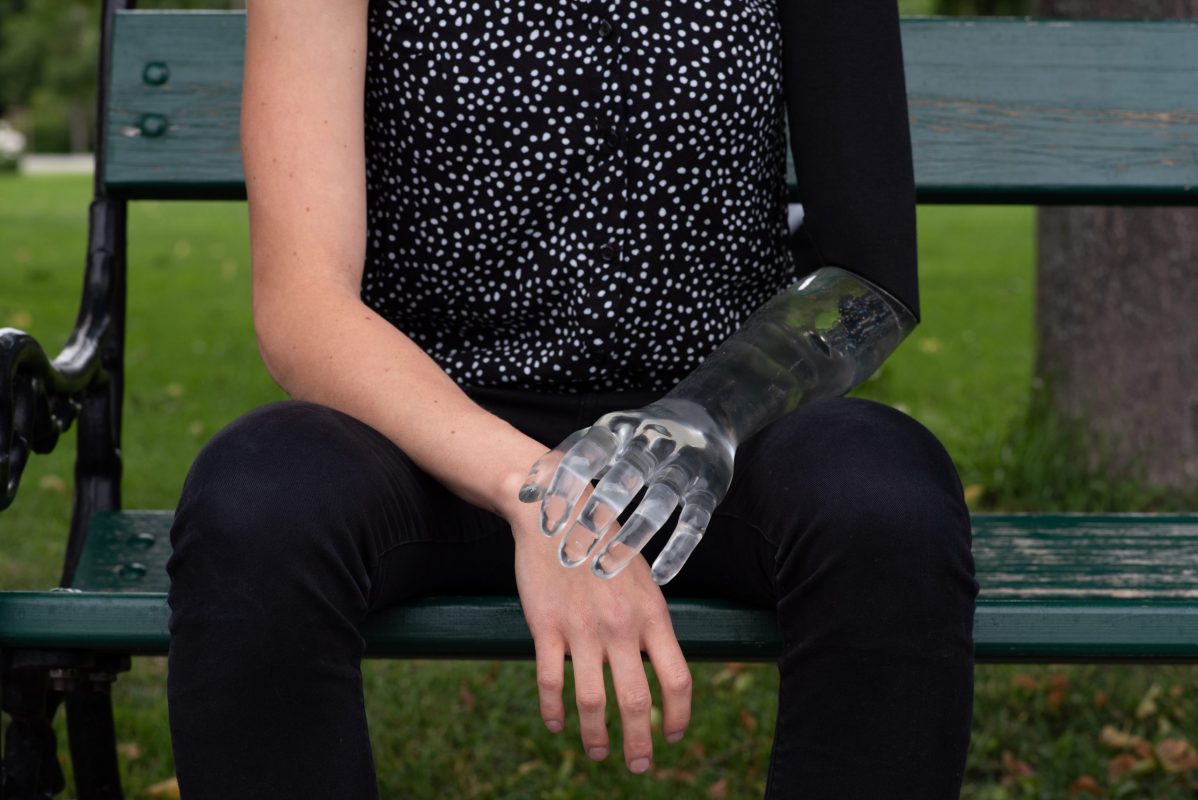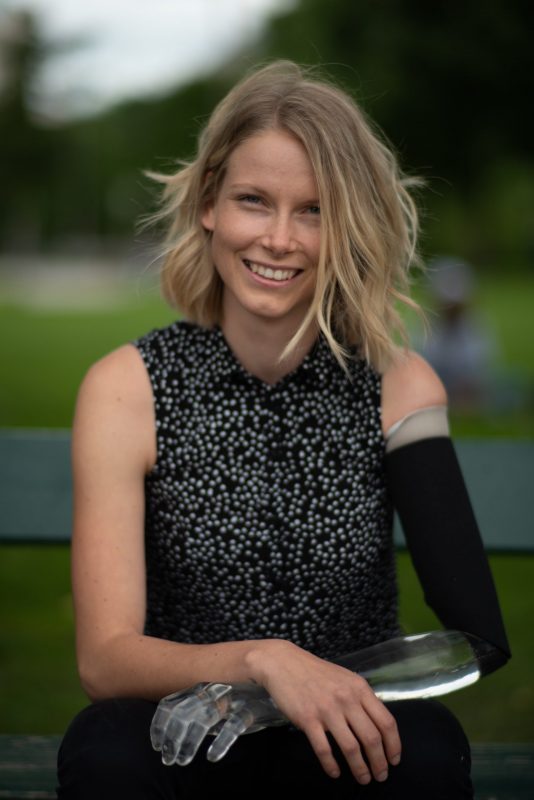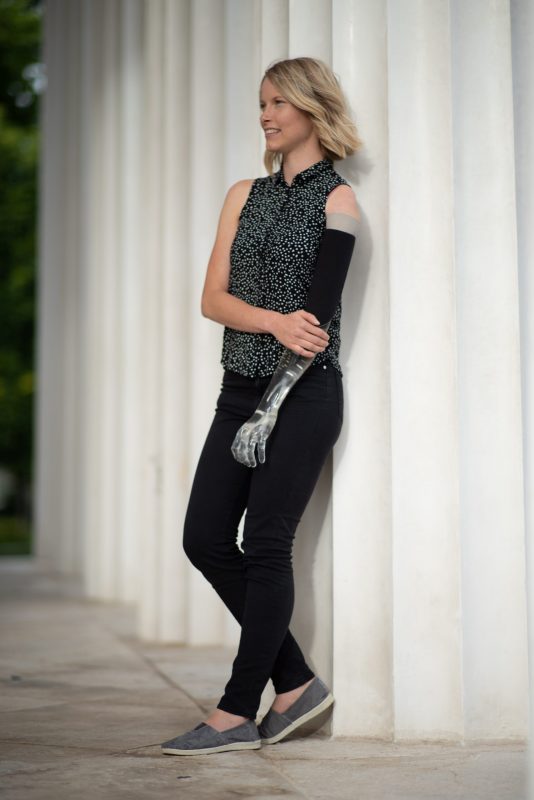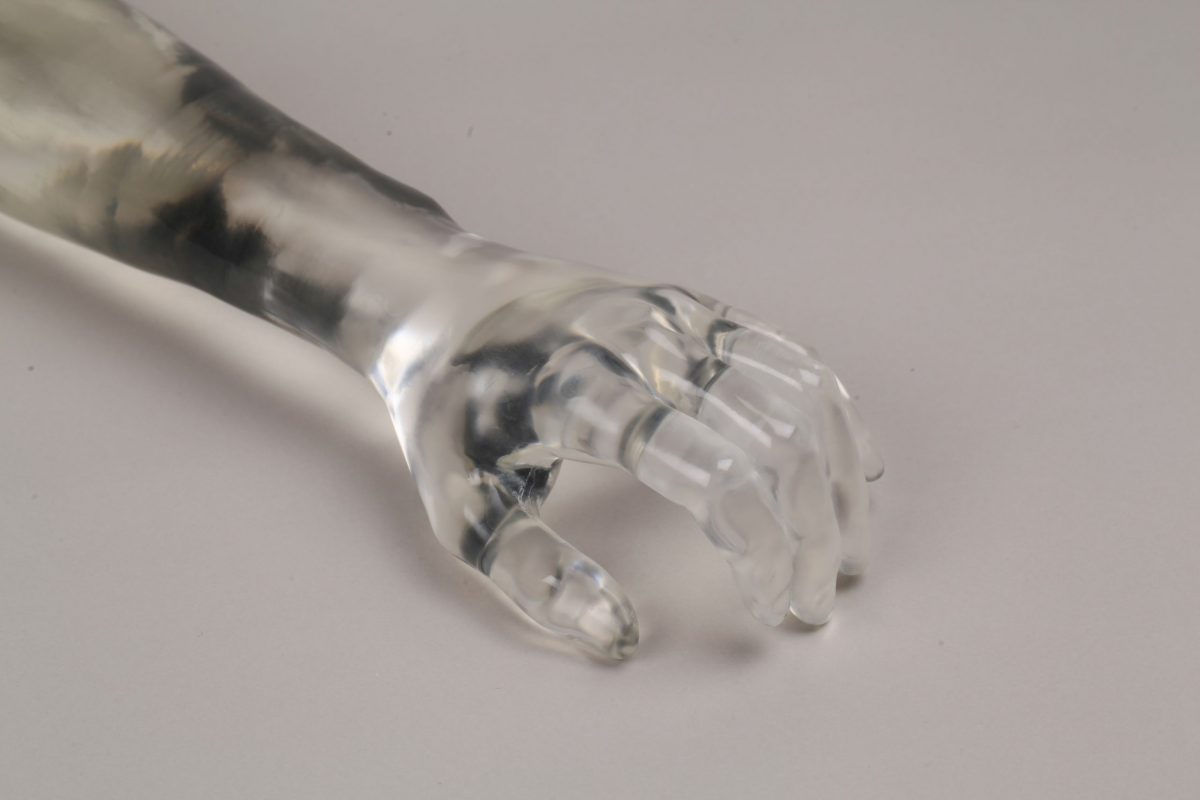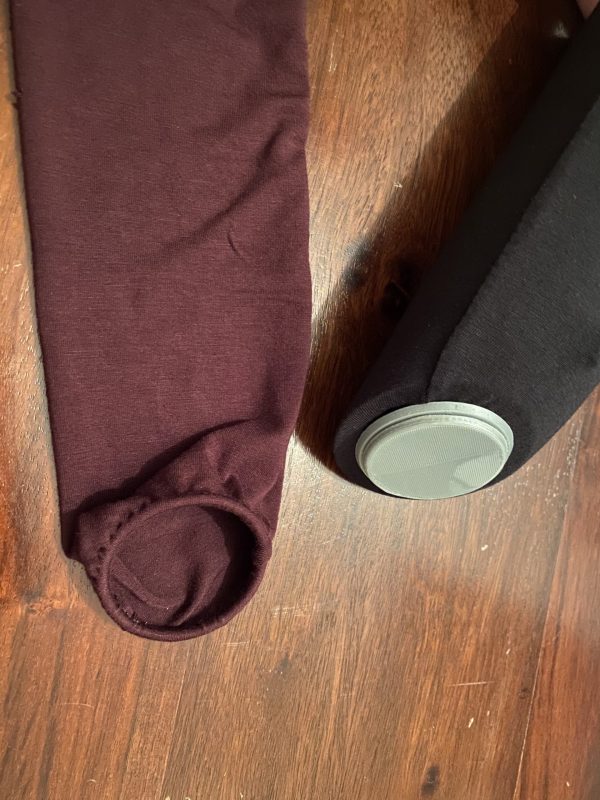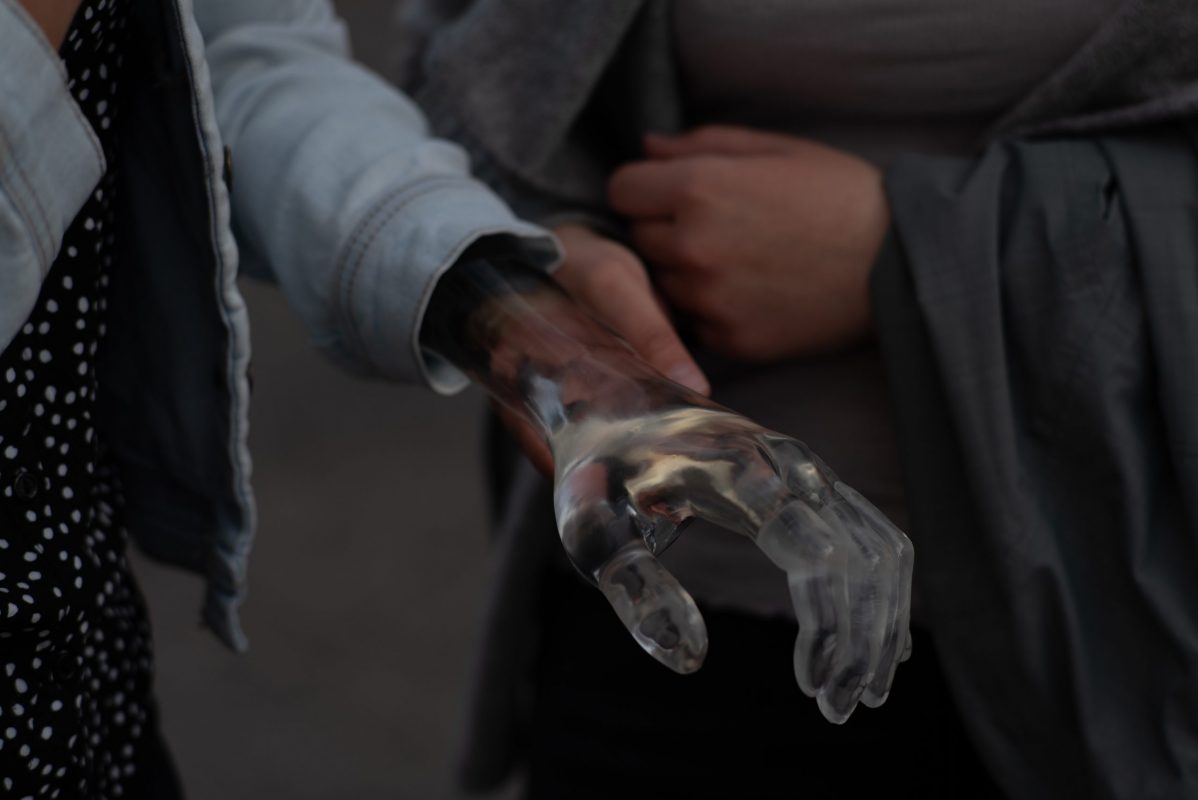with Eva Jöchl,
Stefan Diez
The goal of this project was the development of a prosthetic arm that fits the needs of the young woman Eva Jöchl. She is a very sports loving person and also quite successful in the world of disabled sports. Eva and I met last summer after she had contacted the institute in search of a designer who was interested in developing a custom prosthesis for her.
She wants a prosthetic arm to wear everyday as a counterweight in order for her muscles to develop more symmetrically and therefore avoid problems in her spine and back. And secondly, she would also appreciate it for the symmetrical look it gives her body. But she doesn’t need the prosthesis for grabbing or holding things – since she was born with one arm her stump is much more of a tool for her then a prosthesis could ever be. Because even though she was born without her left arm and is more or less used to it, she says she doesn’t like the way people look at her when she is out in public, and that a person wearing a prosthesis – in her eyes – appears to be much stronger than one who is without.
Eva told me that professional prosthetics engineers were mostly interested in copying either the function or the look of a human arm. There are so called cosmetic prostheses that try to imitate the look of a human arm, but while they can look quite realistic, there is a certain kind of „creepyness“ to them, that stays with us while our mind is trying to understand what is going on. The other type of modern upper limb prostheses are myoelectric prostheses. They are able to imitate the movement of a real hand so well that the person wearing one can often – after quite an extensive amount of training – actually grab things, drink from a cup of water or hold a tool.
But while modern myoelectric prostheses are super cool in the way they work they are not working for most people who were born without a second arm – simply because they never had the nervous connections that lead from the brain to their fingertips. As opposed to someone who has lost their arm or hand. Those people have a so called „phantom connection“ to the lost limb. In that case it is possible to use sensors to detect the nerve signals and use them to control motors in a prosthesis.
So – a myoelectric prosthesis is not the right thing for Eva. And – as she finds it super inelegant and quite creepy – especially when it is lying around in her flat – a cosmetic prosthesis imitating a human arm is also not the right thing for her.
To find out what could be the right solution for her, first I tried to identify the problems as well as the what is working well for her in her old prosthesis. One of the most obvious things was that there is a certain creepiness that comes from the imitation of the human skin. And from the way that our perception doesn’t grasp that it is not a „living“ arm while at the same time we feel that „there is something wrong“ and that makes us feel uncomfortable. So I had to find a way of making the lower arm understandable for our perception. But I decided against using bold colours or robot-like design in order to keep it as elegant as possible.
A thing that works really well for Eva is the way that her stump is connected to the prosthetic shaft of the old prosthesis. So I decided to keep that technique – it is a silicon liner that holds to the stump by forming a vacuum and has a metal pin at the tip that snaps into a socket and can be released by pushing a button.
One of the things that immediately came to my notice was that the elbow hinge opens up at the back and front depending on whether it is bent or flexed. That means that material can easily get pinched in between the upper and lower arm and there is no „clean“ transition. And – as the hinge joint moves in a two dimensional way the movement of the arm becomes slightly „robot-like“ In a real human arm the movement of the lower arm is – most of the time – a combination of the movements of the elbow joint and the torsion movement of the ulna and radius bones in the lower arm.
picture copyright: Kevin Nilles
picture copyright: Kevin Nilles
So I had the idea to try to build the elbow from an elliptic pipe that was cut at an angle so that the section would have the form of a circle. And when that seemed to create quite a nice movement I proceeded from there.
So – in short, what are the most important points:
The arm should be elegant and not creepy.
It should swing in a motion that is close to the one of a human arm. That also means that the weight has to be distributed evenly in the lower arm.
It should be possible to fix the elbow in any position in order to be able to hang a bag on the lower arm that Eva can fill with her right hand.
And – because it has always been very hard for her to put her prosthesis into the sleeves of her clothes I decided to build in a way of taking off the lower arm at the elbow easily and quickly that would „snap back in place“ when the two parts are brought together.
So for the prosthesis I created I decided that – in order to make the hand transparent for the perception the right thing was to really make it transparent. Also keeping the shape of the arm close to the shape of Evas other arm felt like the right thing to do given that the project was in many ways was about dealing with symmetry. And using transparency was the closest I could get to dematerializing the arm while using a full material for the weight that was needed.
Detaching the lower arm from the prosthesis shaft by pushing the blue pin upwards releases the inner holding mechanism.
The moment when the mechanism worked for the first time after many models and modifications.
For the shaft I had the idea to put fabric over the plastic parts so that it would be more agreeable to the skin and more comfortable to wear.
Eva told me that she brings home fabric quite often when she travels but then never found a specific project or idea how to use it.
So I designed a simple sewing pattern that she can also use herself to make new sleeves for her prosthesis.
To create a sleeve one plastic ring is sewn into a pipe of fabric. That plastic ring then fits into the cutout on the shaft of the prosthesis. The sleeve can be taken off and washed as regular laundry.
Thank you to:
Eva Jöchl – for the collaboration and her trust
Stefan Diez
Georg Glaeser – for discussing my geometrical visions
Juliane Fink – for many discussions and help with modelbuilding
Stefan Egger & Peter Honeder – for the help with 3D-printing and the advice about epoxi casting
Claus Greiner from Orthoaktiv – for sponsoring the shuttle lock
Anita Hörandl – for the help with my text & moral support whenever needed
Kevin Nilles – for an amazing fotoshooting
Stephan Rayer – for the help with organising stuff in these crazy times
The Bars Brendl & Madai for sponsoring many kilos of ice for cooling the epoxi resin
Shivi Saini – for all the technical support, the help with 3D-scanning and everything else that he did to make this project happen

